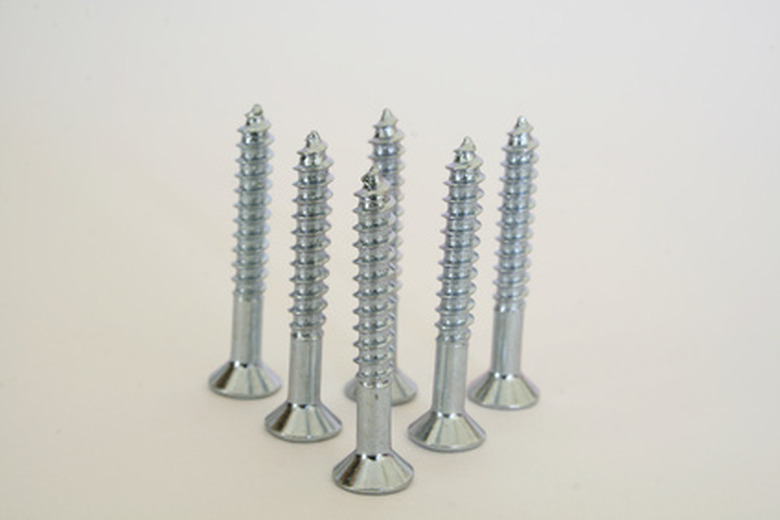How To Calculate The Hole Size For Screws
Tip
If you have plugs that are much larger than the screw head, choose a bung-hole drill the same size or slightly smaller than the plugs.
Screws go in more easily and hold more tightly if you drill the right hole size. Wood screws may need three different-sized drill bits, one for the pilot hole, one for the shank hole and one to countersink the head. Even sheet metal screws that tap their own threads need a pilot hole to get them started. You can use a chart to determine what hole sizes to drill, but if you don't know the number of the screw or don't have a chart handy, you can use the screw itself as a guide to choose the right drill bit.
Step 1
Examine drill bits until you find one that looks about the same diameter as the root of the screw. The root is the center shaft, not including the threads which stick out. Hold the drill against the screw and compare their diameters closely.
Step 2
Set that drill bit aside to drill the pilot hole in hardwood or sheet metal. For softwoods, choose drill bits that are slightly smaller than the root.
Step 3
Hold another drill bit against the shank of the screw, which is the section without any threads below the head. Sheet metal screws don't have shanks, so you usually only need a pilot hole for them. Choose a drill bit for the shank hole that's the same size as the shank for hardwood or the same or slightly smaller for softwood.
Step 4
Measure the diameter of the screw head if you want to drill a bung hole so you can conceal the head below the surface with a plug. Choose a drill bit that's the same diameter as the head or slightly larger. If the screw is a flat-head style, you'll also need a cone-shaped countersink drill bit at least as large as the diameter of the head, to sink the head.
Step 5
Measure the length of the shank and the length of the entire screw, not counting the taper at the tip. If it's a flat-head screw, include the thickness of the head in both measurements; otherwise begin the measurement below the head. These measurements will be the depth of the pilot hole and shank hole.
Step 6
Drill the bung hole, if needed. Drill the pilot hole the same depth as the length of the screw, starting on the surface or at the bottom of the bung hole. Enlarge the pilot hole with the shank hole drill bit to the depth of the shank, starting on the surface or at the bottom of the bung hole, if needed.
Step 7
Countersink the top of the hole with a countersink bit, if the hole is for a flat-head screw.
